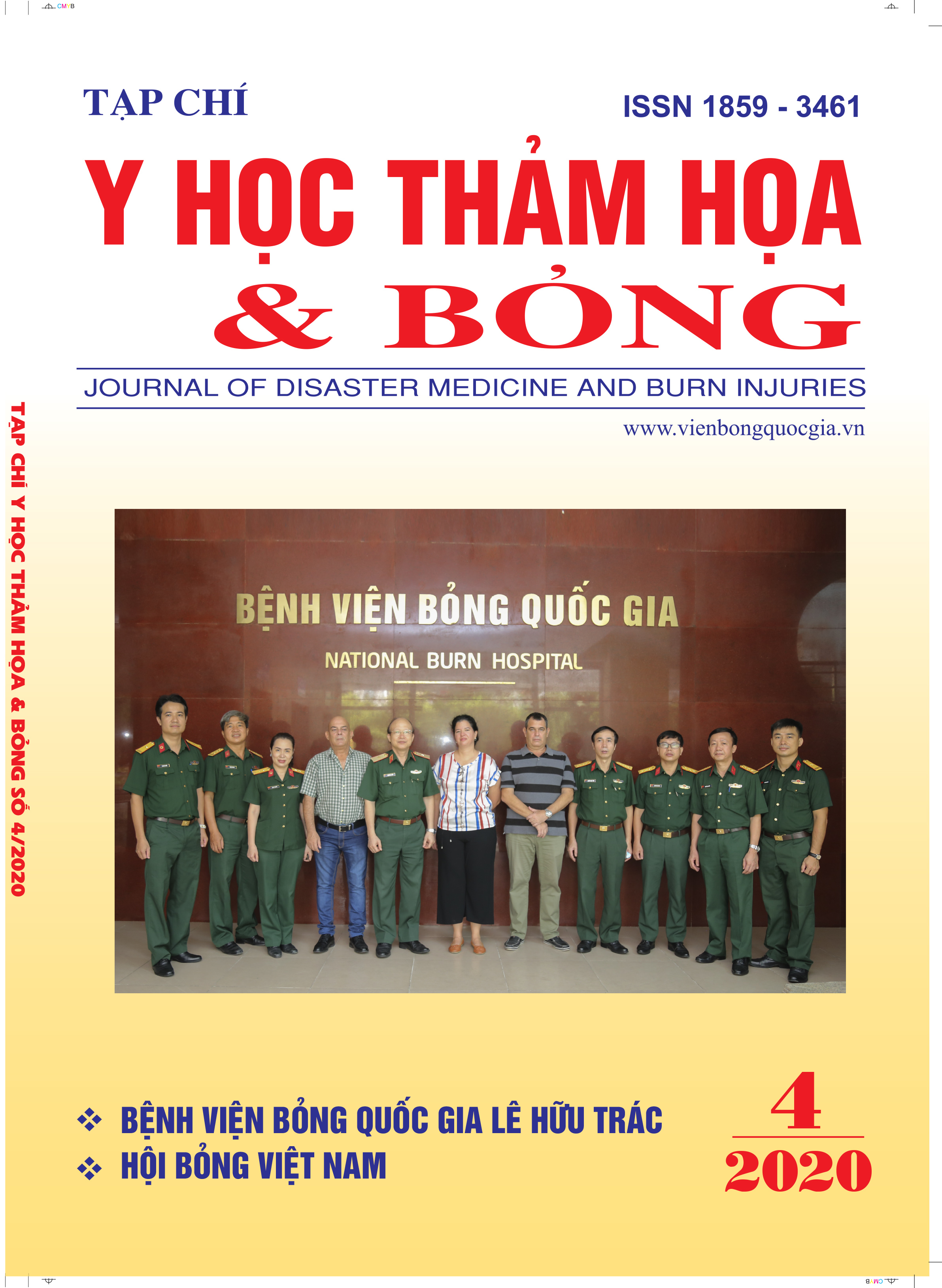Research and building procedure use of allograft skin preserved by Glycerol 85% for treatment deep burns wounds
Main Article Content
Abstract
Glycerol preserved allograft (GPA) has been studied and used since the 1980s. However, the expansion of the application of GPA still has many difficulties related to culture, resources, science and technology, especially in developing countries.
Currently, the National Burn Hospital (Vietnam) has studied the recovery and preservation of allograft skin in 85% Glycerol. To widely apply GPA in clinical, we have built a procedure to use GPA in the treatment of deep burns and apply in the treatment of 30 patients with severe burns; the results show that: GPA adhesion well on the foundation grafting, has the effect of covering, protecting, and affecting the healing process of deep burns.
Article Details
Keywords
allograft skin, , Glycerol preserved allograft (GPA
References
2. Nguyễn Ngọc Tuấn (2012), “Ghép da đồng loại”, Tạp chí Y học thảm hoạ và Bỏng,1: 32-36.
3. Lê Thế Trung (2003), Bỏng - những kiến thức chuyên ngành, Nhà xuất bản y học, Hà Nội.
C. Druecke, L. Steinstraesser, H.H Homann, et al (2002), “Current indications for glycerol-preserved allografts in the treatment of burn injuries”, Burns, 28, pp. 26-30.
4. Kagan R. J., Robb E. C. and Plessinger R. T. (2005), “Human skin banking”, Clinics in laboratory medicine.25 (3): 587-605.
5. Khoo. TL, Halim AS, Saad AZ et al (2010), “The application of glycerol-preserved skin allograft in the treatment of burn injuries: an analysis based on indications”, Burns, 36 (6): 894-904.
6. Kreis R., Mackie D., Vloemans A.. et al (1993), “Widely expanded postage stamp skin grafts using a modified Meek technique in combination with an allograft overlay”, Burns.19 (2): 142-145.
7. Leon-Villapalos J., Eldardiri M. and Dziewulski P. (2010), “The use of human deceased donor skin allograft in burn care”, Cell and tissue banking.11 (1): 99-104.
8. Liangpeng Ge, Zhenggen Huang and Hong Wei (2011), “Skin Grafts Preservation”, In Skin Grafts – Indication, Application and Current Research; Publisher InTech.
9. Michel H E Herman (2011), “Preservation method of allografts and their (lack of) influence on a clinical result in partial-thickness burns”, Burns, 37(5):873-81.
10. Moerman E, Middlekoop E, Mackie D et al (2002), “The temporary use of allograft for complicate wounds plastic surgery”, Burns, 28, pp. 13-15.
11. Richters C., Hoekstra M., Van Baare J.. et al (1996), “Morphology of glycerol-preserved human cadaver skin”, Burns.22 (2): 113-116.
12. Richters C., Hoekstra M., Du Pont J.. et al (2005), “Immunology of skin transplantation”, Clinics in dermatology.23 (4): 338-342.
13. Saad A. M., Khoo T., Dorai A.. et al (2009), “The versatility of a glycerol-preserved skin allograft as an adjunctive treatment to free flap reconstruction”, Indian journal of plastic surgery: official publication of the Association of Plastic Surgeons of India.42 (1): 94.
14. Vloemans AF, Scheinemanchers MC, Middelkoop E, Kreis RW (2002), “The use of glycerol-preserved allografts in Beverwijk Bern Center: a retrospective study”, Burns; 28 Suppl1: pp 2-9.
15. Vloemans A., Middelkoop E. and Kreis R. (2002) “A historical appraisal of the use of cryopreserved and glycerol-preserved allograft skin in the treatment of partial-thickness burns”. Burns.28: 16-20.


